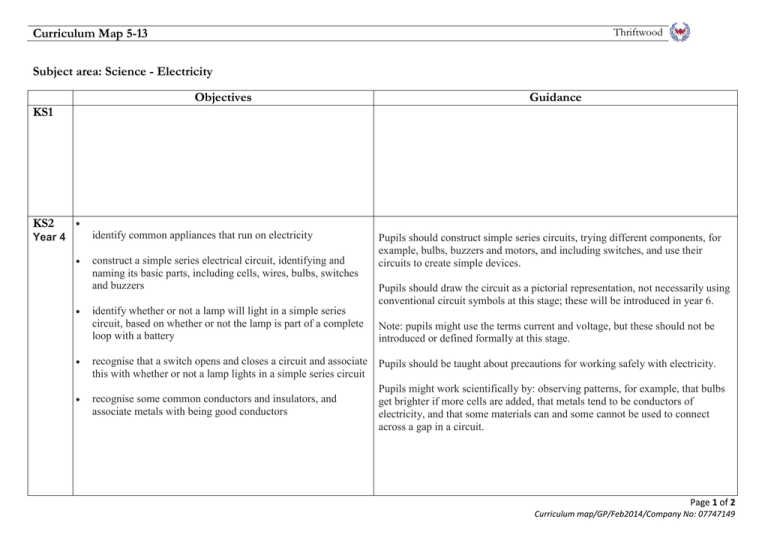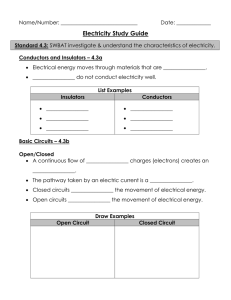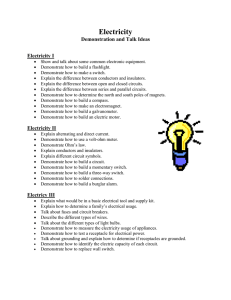Electricity Curriculum Map for Elementary & Middle School
advertisement

Curriculum Map 5-13 Thriftwood Subject area: Science - Electricity Objectives Guidance KS1 KS2 identify common appliances that run on electricity Year 4 construct a simple series electrical circuit, identifying and naming its basic parts, including cells, wires, bulbs, switches and buzzers identify whether or not a lamp will light in a simple series circuit, based on whether or not the lamp is part of a complete loop with a battery Pupils should construct simple series circuits, trying different components, for example, bulbs, buzzers and motors, and including switches, and use their circuits to create simple devices. Pupils should draw the circuit as a pictorial representation, not necessarily using conventional circuit symbols at this stage; these will be introduced in year 6. Note: pupils might use the terms current and voltage, but these should not be introduced or defined formally at this stage. recognise that a switch opens and closes a circuit and associate this with whether or not a lamp lights in a simple series circuit Pupils should be taught about precautions for working safely with electricity. recognise some common conductors and insulators, and associate metals with being good conductors Pupils might work scientifically by: observing patterns, for example, that bulbs get brighter if more cells are added, that metals tend to be conductors of electricity, and that some materials can and some cannot be used to connect across a gap in a circuit. Page 1 of 2 Curriculum map/GP/Feb2014/Company No: 07747149 Curriculum Map 5-13 KS2 cont. Year 6 KS3 Thriftwood associate the brightness of a lamp or the volume of a buzzer with the number and voltage of cells used in the circuit Building on their work in year 4, pupils should construct simple series circuits, to help them to answer questions about what happens when they try different components, for example, switches, bulbs, buzzers and motors. compare and give reasons for variations in how components They should learn how to represent a simple circuit in a diagram using function, including the brightness of bulbs, the loudness of recognised symbols. buzzers and the on/off position of switches Note: pupils are expected to learn only about series circuits, not parallel circuits. Pupils should be taught to take the necessary precautions for working safely use recognised symbols when representing a simple circuit in a with electricity. diagram Pupils might work scientifically by: systematically identifying the effect of changing one component at a time in a circuit; designing and making a set of traffic lights, a burglar alarm or some other useful circuit. Electricity and electromagnetism Current electricity electric current, measured in amperes, in circuits, series and parallel circuits, currents add where branches meet and current as flow of charge differences in resistance between conducting and insulating components (quantitative) Static electricity separation of positive or negative charges when objects are rubbed together: transfer of electrons, forces between charged objects the idea of electric field, forces acting across the space between objects not in contact Magnetism magnetic poles, attraction and repulsion magnetic fields by plotting with compass, representation by field lines Earth’s magnetism, compass and navigation the magnetic effect of a current, electromagnets, DC motors (principles only) Page 2 of 2 Curriculum map/GP/Feb2014/Company No: 07747149





